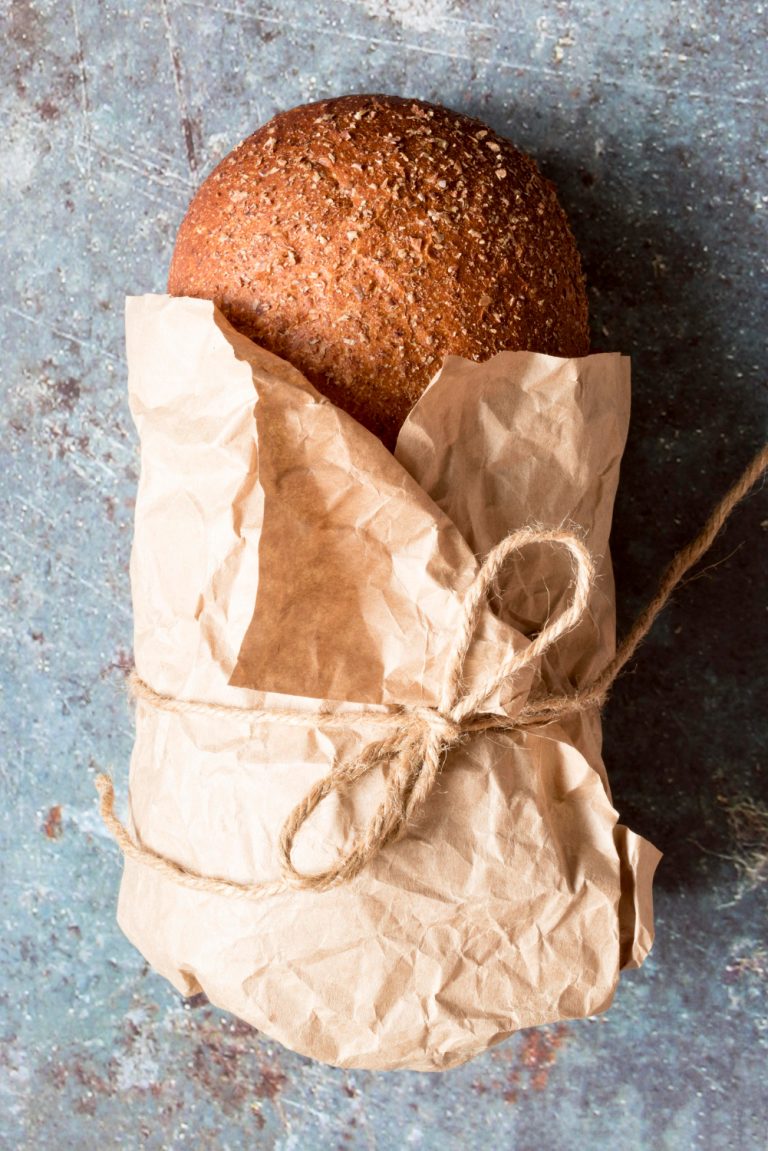5 Clear Signs of a Bad Sourdough Starter You Shouldn’t Ignore
Maintaining a healthy sourdough starter is crucial for successful bread-making. As passionate bakers, we know how frustrating it can be when our starters don’t perform as expected. That’s why we must be aware of the signs of a bad sourdough starter to ensure our bread turns out delicious every time.
This article will explore five clear indicators that your sourdough starter might be in trouble. We’ll look at issues like unusual smells, strange appearances, and changes in behavior that could signal problems. By understanding these warning signs, we’ll be better equipped to identify and fix issues with our starters before they ruin our baking efforts.
Persistent Rancid or Cheesy Smell

Image Source: The Perfect Loaf
When working with my sourdough starter, I always pay close attention to how it smells. A persistent rancid or cheesy odor is one of the most evident signs that something might be wrong with my starter. Let’s explore this issue in more detail.
Normal sourdough aromas
A healthy sourdough starter typically has a pleasant, yeasty smell with a slightly tangy note. As it goes through different stages of fermentation, I might notice various aromas like ripe fruit, beer, or even a mild vinegar scent. These are all normal and indicate that my starter is active and doing its job.
Identifying spoilage odors
However, if I detect a strong, persistent smell that reminds me of rancid cheese or something unpleasant, it’s a red flag. This could mean that unwanted bacteria have taken over my starter. Other concerning odors include a strong acetone smell (like nail polish remover) or a moldy scent. These are signs that my sourdough starter might be going wrong.
Addressing persistent bad smells
To fix a smelly starter, I first try increasing the feeding frequency and using a higher ratio of flour to water. This helps to dilute the acidity and promote healthy yeast growth. If the smell persists, I might need to adjust the temperature or switch to filtered water. In extreme cases, starting over with a fresh batch might be necessary to ensure I work with a healthy sourdough starter.
White Fuzzy Patches on the Surface

Image Source: Our Gabled Home
When I examine my sourdough starter, one of the most alarming signs I look for is white fuzzy patches on the surface. These patches are often a clear indicator that something’s not right with my starter. Let’s explore what these patches mean and how to deal with them.
Differentiating between yeast and mold
It’s crucial to distinguish between harmless yeast growth and dangerous mold. Yeast typically appears as a thin, white film or tiny bubbles on the surface. Conversely, mold is fuzzy and can be white, green, or even black. If I see anything fuzzy, it’s a red flag that mold has taken hold.
Types of white mold in starters
White mold in sourdough starters often appears as a pellicle on the surface. This can happen for several reasons:
- Infrequent feeding
- Using a dirty container
- Too much air space in the jar, causing the top to dry out
Preventing mold growth
To keep my starter mold-free, I follow these practices:
- Feed my starter at least every 24 hours
- Use a clean jar every few days
- Maintain a consistent feeding schedule
- Store my starter at the right temperature (70-75°F)
- Use quality ingredients and filtered water
If I spot mold, I always err cautiously and discard the entire batch. It’s better to start fresh than risk using a contaminated starter.
Excessive Liquid Production

Image Source: Reddit
When I’m working with my sourdough starter, I look for excessive liquid production. This can be a sign that my starter isn’t happy. Let’s explore what this means and how to address it.
Normal hooch levels
A small amount of hooch liquid on top of my starter is average. It’s usually clear or slightly cloudy and is a byproduct of fermentation. I often see this if I’ve left my starter unfed for a while. A little hooch isn’t a problem – I can either stir it back in or pour it off before feeding.
Signs of over-fermentation
If I notice a lot of liquid or if it’s constantly appearing, it might mean my starter is over-fermenting. This can happen if:
- The temperature is too warm
- I’m not feeding it often enough
- The hydration level is too high
An over-fermented starter might smell strongly of acetone or alcohol. It also might not rise or bubble as much as it should.
Balancing starter hydration
To fix this issue, I focus on balancing my starter’s hydration. I aim for a consistency like thick pancake batter. If it’s too runny, I add more flour during feedings. I feed it regularly – every 12 hours if it’s on the counter.
By monitoring liquid production and adjusting my care routine, I can maintain a healthy, active sourdough starter for delicious bread-making.
Failure to Float When Mature

Image Source: Farmhouse on Boone
When working with my sourdough starter, I often use the float test to check if it’s ready for baking. This test involves dropping a small starter into the water to see if it floats. However, I’ve learned that this method isn’t always reliable.
Understanding the float test
The float test is based on the idea that a mature starter will be full of carbon dioxide bubbles, making it light enough to float. When my starter passes this test, it usually means it’s active and ready for baking. But there’s more to it than just floating or sinking.
Reasons for failed float tests
Sometimes, my starter fails the float test even when it’s healthy. This can happen if:
- I’ve stirred the starter, popping the bubbles
- The starter is past its peak activity
- I’m using flour with low gluten content, like rye or whole wheat
- The starter’s consistency is too runny
Alternatives to the float test
Instead of relying solely on the float test, I look for other signs of a healthy starter:
- Doubling in size after feeding
- A dome-like shape at its peak
- Plenty of bubbles throughout
- A pleasant, yeasty smell
By observing these factors, I can better judge if my sourdough starter is ready for baking, even if it doesn’t pass the float test.
Sudden Changes in Fermentation Time

Image Source: All you knead is bread
I’ve noticed that sudden changes in fermentation time can be a clear sign of sourdough starter problems. Let’s explore why this happens and how to troubleshoot it.
Normal fermentation patterns
A healthy sourdough starter typically has a consistent fermentation pattern. I expect my starter to rise and fall predictably, usually peaking within 4-8 hours after feeding. This consistency is crucial for planning my baking schedule.
Factors affecting fermentation speed
Several factors can influence how quickly my starter ferments:
- Temperature: Warmer environments speed up fermentation, while cooler temperatures slow it down.
- Flour type: Whole-grain flours ferment faster than refined flours.
- Hydration level: Wetter starters generally ferment more quickly than stiffer ones.
- Feeding ratio: Higher ratios of fresh flour and water to mature starter can slow fermentation.
Troubleshooting inconsistent activity
If I notice my starter suddenly taking much longer or shorter to ferment, it’s a red flag. To fix this, I might:
- Adjust the feeding schedule
- Change the flour type or ratio
- Monitor the temperature more closely
- Check for contamination
By addressing these factors, I can usually get my starter back on track and avoid signs of sourdough starter going bad.
Conclusion
Maintaining a healthy sourdough starter is critical to successful bread-making. Bakers can catch and address issues early by keeping an eye out for these five clear signs of trouble – unusual smells, fuzzy patches, excessive liquid, failed float tests, and sudden changes in fermentation time. This awareness allows for timely adjustments to feeding schedules, environmental conditions, or ingredient ratios, ensuring the starter remains in top form for creating delicious, tangy loaves.
Understanding these warning signs empowers home bakers to troubleshoot effectively and confidently maintain their sourdough starters. To take your bread and pizza game to the next level, try an authentic artisanal sourdough starter from The Yeast We Can Do by emailing [email protected]. With proper care and attention, your sourdough starter can become a reliable kitchen companion, ready to help you create exceptional baked goods time and time again.
FAQs
How can I tell if my sourdough starter has gone wrong?
- You can identify a spoiled sourdough starter with unusual colors such as pink, orange, and green or if there are white fuzzy spots. These are signs of mold and spoilage, and it’s best to discard the starter and begin anew.
What are the signs that my sourdough starter isn’t functioning correctly?
- A healthy sourdough starter should consistently double in size after feeding. If your starter fails to do this despite showing occasional bubbles, it may not be active enough. Focus on revitalizing your starter to achieve reliable growth.
What does a sourdough starter look like when it has failed?
- A failed sourdough starter might display mold that can appear fuzzy and be black, white, or powdery. A crusty layer might form on the surface, often due to missed feedings, and is typically Kahm Yeast, which is less concerning than mold.
What color indicates a spoiled sourdough starter?
- Look out for orange, pink, blue, or green spots on your sourdough starter, which might also be fuzzy. These colors indicate mold growth; in such cases, the entire starter batch should be discarded for safety.






